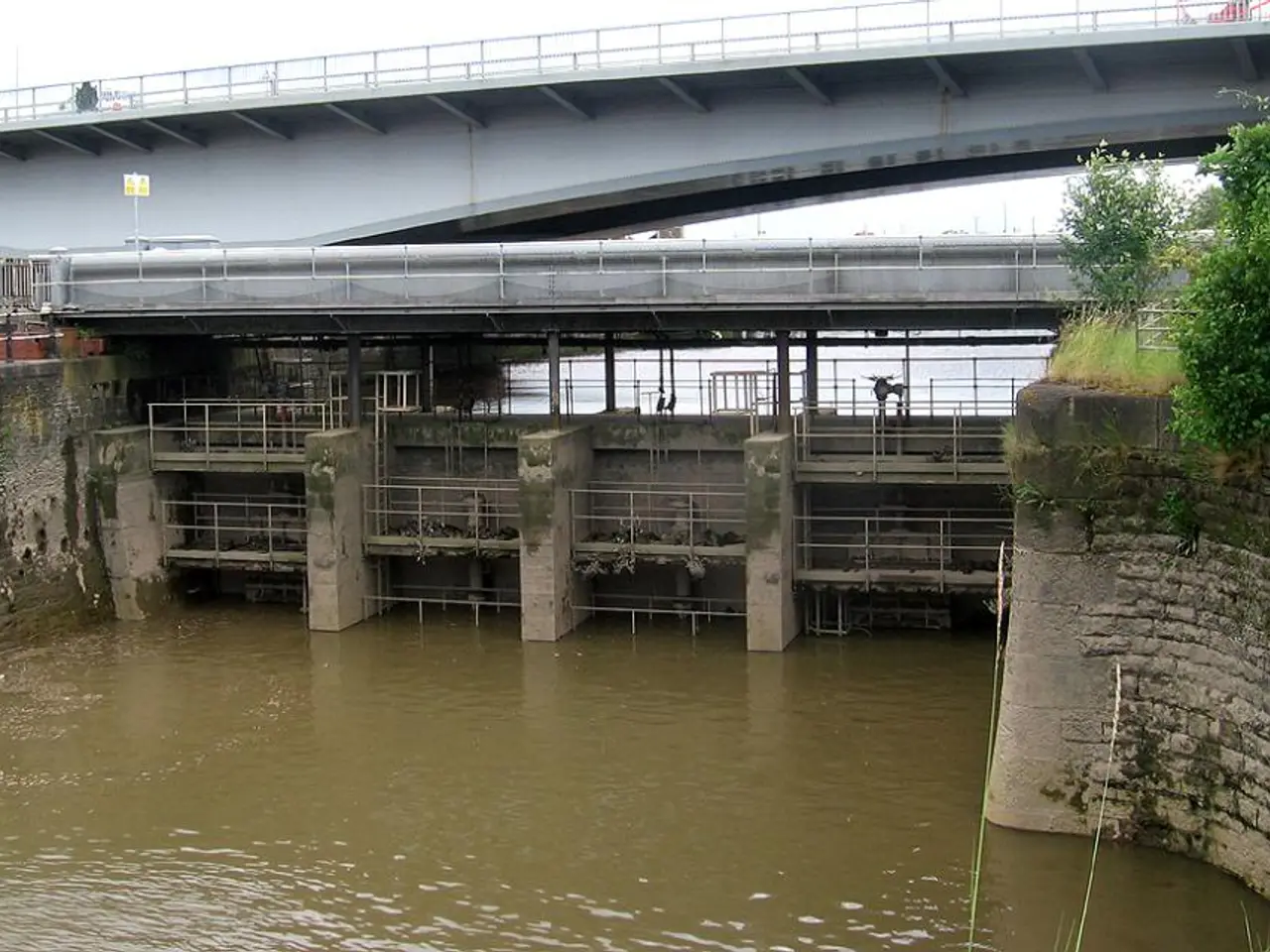Government considering coordinated approach for addressing flood issues
**Thailand Bolsters Flood Preparedness for Early Monsoon Season**
Thailand has implemented a comprehensive, multi-agency approach to flood preparedness this year, with a focus on early and intense monsoon rains. The action plans and coordination efforts reflect a strong emphasis on interdepartmental collaboration, infrastructure readiness, and rapid response capabilities.
Key Action Plans -----------------
Infrastructure Inspection and Maintenance ------------------------------------------
Water infrastructure is being inspected nationwide, with waterway obstructions being cleared and structures blocking them being demolished by irrigation authorities and local governments. Dredging of rivers will be coordinated with military units.
Designation of High-Risk Sites --------------------------------
1,652 flood-prone sites have been identified across Thailand, with equipment such as pumps, water-pushing machines, trucks, and boats being stationed at these locations for immediate response.
Monitoring and Early Warning Systems -------------------------------------
The Royal Irrigation Department (RID), Thai Meteorological Department (TMD), Geo-Informatics and Space Technology Development Agency (GISTDA), and the National Water Resources Office are jointly responsible for monitoring storms, predicting heavy rainfall, and issuing alerts at least 2–3 days in advance. Early warning systems are being checked for functionality, and backup communication options are being ensured.
Geological Hazard Assessment -----------------------------
The Department of Mineral Resources assesses risks for landslides and earthquakes, sharing data with local agencies to improve readiness and public awareness.
Resource Mobilization and Evacuation Preparedness --------------------------------------------------
The army, navy, and Department of Disaster Prevention and Mitigation (DDPM) are mobilized to provide manpower, aircraft, vehicles, and other resources. Temporary evacuation shelters, kitchens, and medical units are being pre-positioned and equipped.
International and Provincial Coordination ------------------------------------------
Coordination with Myanmar is ongoing to address sediment runoff and toxic contamination from upstream mining operations, utilizing both diplomatic and military channels. Cooperation with Malaysia includes a formal early-warning mechanism for water releases, to be notified three to four days in advance, especially ahead of the northeast monsoon season.
Roles of Government Departments and Agencies ---------------------------------------------
* **Royal Irrigation Department (RID):** Coordinates flood management, maintains water infrastructure, clears waterways. * **Thai Meteorological Department (TMD):** Monitors weather, issues forecasts and alerts. * **GISTDA:** Provides geospatial monitoring and early warning data. * **National Water Resources Office:** Monitors water levels, coordinates regional responses. * **Department of Mineral Resources:** Assesses geological hazards, shares data with local agencies. * **Department of Disaster Prevention and Mitigation (DDPM):** Leads disaster response, mobilizes resources, sets up evacuation centers. * **Local Governments:** Work with irrigation authorities to remove obstructions, manage local readiness. * **Army and Navy:** Provide logistics, manpower, and rescue operations.
Additional Measures --------------------
* **Close Monitoring of Reservoirs:** Small to medium-sized reservoirs are under close watch, especially in flood-prone provinces like Chiang Rai, Phayao, Nan, Tak, Loei, Bueng Kan, Udon Thani, Roi Et, Yasothon, Surin, Si Sa Ket, and Ubon Ratchathani. * **Public Warnings:** Authorities issue specific warnings for flash floods, landslides, and forest runoff during heavy rain periods, targeting 17 provinces across four regions. * **Coordination with Military:** Military units are involved in emergency dredging and infrastructure support. * **Cross-Border Cooperation:** Agreements with neighboring countries ensure early warning and coordination for water releases that affect shared rivers.
Summary -------
Thailand’s flood preparedness for this year’s early and intense monsoon involves a well-structured, multi-agency approach that prioritizes infrastructure readiness, early warning, rapid resource mobilization, and both national and international coordination. Each agency and department has clearly defined roles, ensuring a swift and effective response to minimize the impact of potential disasters. Mr. Prasert emphasized the need for clear action plans and timely aid delivery to affected citizens. Northern and northeastern provinces such as Chiang Rai, Nong Khai, and Bueng Kan are experiencing heavy rainfall and are at a high risk of flash floods, landslides, and runoff.
- The focus on infrastructure readiness, early warning systems, and rapid response capabilities in Thailand's flood preparedness strategy for the early monsoon season is an integral part of environmental-science and policy-and-legislation, as it involves collaboration among various government departments and agencies such as the Royal Irrigation Department, Thai Meteorological Department, GISTDA, National Water Resources Office, and Department of Mineral Resources.
- The implementation of monitoring and early warning systems, alongside the designation of high-risk sites and the mobilization of resources like pumps, water-pushing machines, trucks, and boats, falls under the category of climate-change and general-news, as these measures aim to mitigate the effects of intense monsoon rains and prepare for potential flooding in a warming climate.
- International and provincial coordination, including agreements with neighboring countries for early warning and coordination for water releases that affect shared rivers, and the close monitoring of reservoirs in flood-prone provinces like Chiang Rai, Phayao, and Bueng Kan, highlights the significance of politics in ensuring the effective management of natural resources and disaster mitigation, as well as maintaining regional stability and cooperation.








